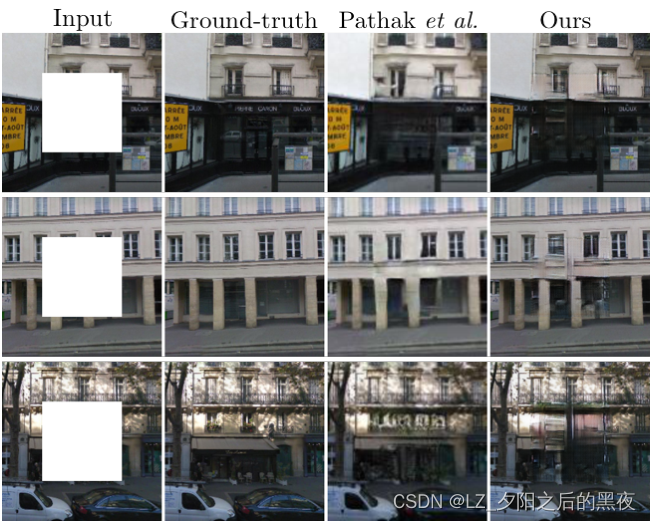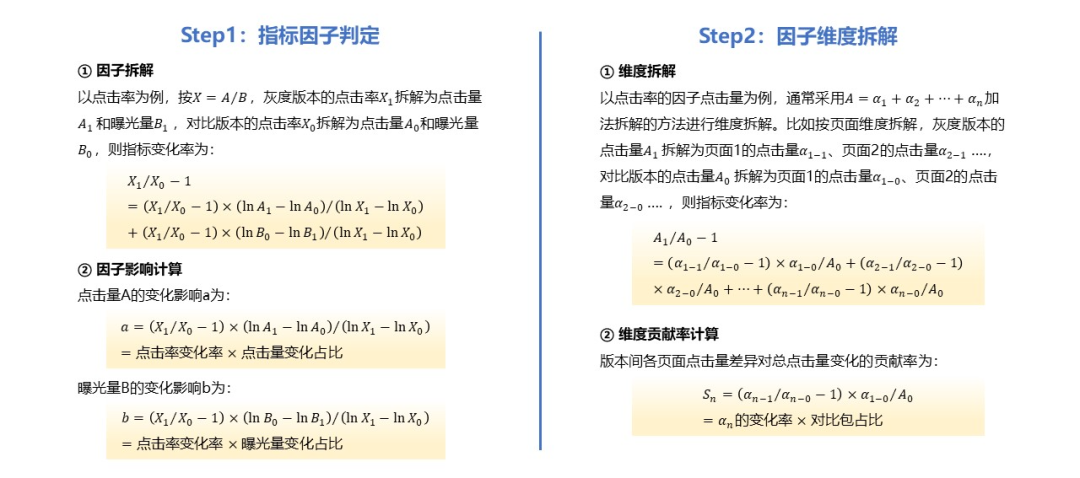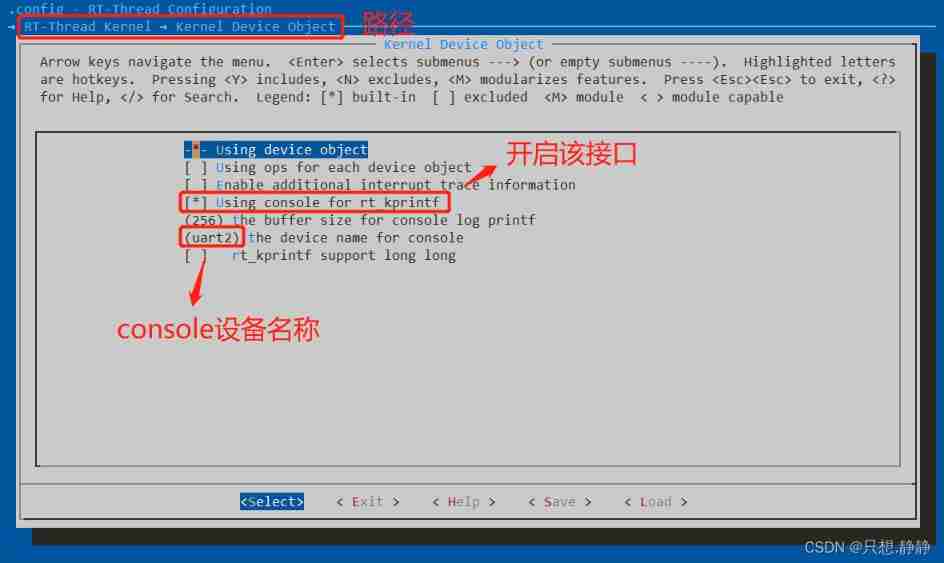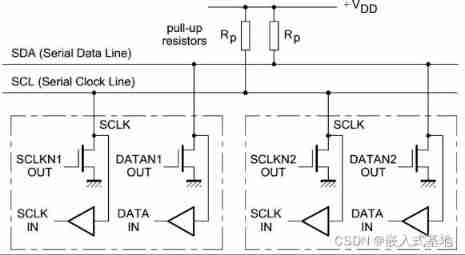当前位置:网站首页>Summary of deep learning tuning tricks
Summary of deep learning tuning tricks
2022-07-06 05:19:00 【Xiaoshu Xiaoshu】
Looking for the right learning rate (learning rate)
Learning rate is a very important super parameter , What about this parameter , Facing different scales 、 Different batch-size、 Different optimization methods 、 Different data sets , The most suitable values are uncertain , We can't determine exactly by experience alone lr Value , The only thing we can do , It is to constantly find the most suitable learning rate for the current state in training .
For example, the figure below uses fastai Medium lr_find() Function to find the right learning rate , According to the learning rate below - The loss curve shows that the appropriate learning rate is 1e-2.

Recommend an article fastai Chief designer 「Sylvain Gugger」 A blog of :How Do You Find A Good Learning Rate[1]
And related papers Cyclical Learning Rates for Training Neural Networks[2].
learning-rate And batch-size The relationship between
Generally speaking , The bigger batch-size The greater the learning rate .
The principle is simple , The bigger batch-size It means when we study , In the direction of convergence confidence The bigger it is , We are moving in a more determined direction , And the small ones batch-size It's a bit messy , There's no regularity , Because compared to the big batch , In the case of small batches, we can't take care of more situations , So you need a small learning rate to make sure you don't make mistakes .
Look at the picture below Loss Loss And Learning rate Lr The relationship between :
![]()
With enough video memory , It's better to use a larger batch-size Training , After finding the right learning rate , It can speed up convergence .
in addition , The larger batch-size You can avoid batch normalization There are some small problems , Refer to the following Pytorch library Issue[3]
Weight initialization
Weight initialization compared to other trick In general, it is not used very frequently .
Because most people use pre training models , The weights used are models trained on large data sets , Of course, you don't need to initialize the weights yourself . Only domains without a pre training model will initialize their own weights , Or to initialize the weights of the last several fully connected layers of the neural network in the model .
The commonly used weight initialization algorithm is 「kaiming_normal」 perhaps 「xavier_normal」.
Related papers :
Delving deep into rectifiers: Surpassing human-level performance on ImageNet classification[4]
Understanding the difficulty of training deep feedforward neural networks[5]
Xavier Initial paper [6]
He Initial paper [7]
Not initializing may slow down convergence , Influence the convergence effect .
following Input size for network , Is the output size of the network , by or
uniform Evenly distributed initialization :
Xavier The initial method , For ordinary activation functions (tanh, sigmoid):
He initialization , Apply to ReLU:
normal Gaussian distribution initialization , among stdev Is the standard deviation of Gaussian distribution , The mean value is set to 0:
Xavier The initial method , For ordinary activation functions (tanh,sigmoid):
He initialization , Apply to ReLU:
svd initialization : Yes RNN It has a better effect . Reference paper :https://arxiv.org/abs/1312.6120[8]
dropout
dropout It refers to the training process of deep learning network , For neural network units , According to a certain probability, it will be discarded from the network temporarily . Note that 「 temporary 」, For random gradient descent , Because it's random discard , So every one of them mini-batch They're training different networks .
Dropout Be similar to bagging ensemble Reduce variance. That's voting to reduce variability . Usually we use it in the full connection layer dropout, In the convolution layer, we don't use . but 「dropout」 It's not suitable for all situations , Don't be mindless Dropout.
Dropout It is generally suitable for the whole connection layer , The parameters of the convolution layer are not many , So no need dropout, In addition, it has little effect on the generalization ability of the model .![]()
We usually use the full connection layer at the beginning and end of the network , and hidden layers The convolution layer in the network . So in general , In the whole connection layer , Using a higher probability of dropout In the convolution layer, we use low probability or not dropout.
Dataset processing
There are mainly 「 Data filtering 」 as well as 「 Data to enhance 」
fastai Why the image enhancement technology in is relatively good [9]
It's hard to excavate hard-negative-mining
It is difficult for analytical models to predict the correct samples , Give targeted methods .
Multi-model fusion
Ensemble It's the ultimate nuclear weapon of the paper , There are several ways in deep learning
The same parameters , Different initialization methods
Different parameters , adopt cross-validation, Choose the best groups
The same parameters , Different stages of model training , That is, models with different iterations .
Different models , Linear fusion . for example RNN And traditional models .
To improve the performance and robustness of the model :probs The fusion and laws and regulations governing balloting .
Let's say there is model 1, model 2, model 3, It can be fused like this :
1. model1 probs + model2 probs + model3 probs ==> final label
2. model1 label , model2 label , model3 label ==> voting ==> final label
3. model1_1 probs + ... + model1_n probs ==> mode1 label, model2 label And model3 Acquired label Ways and 1 identical ==> voting ==> final label
The inspiration of the third way comes from , If one model The random seeds are not fixed , Multiple predictions may lead to different results .
The effect of the above methods should be based on label Number , Data set size and other characteristics, specific analysis of specific issues , The performance may be different , The way is nothing more than probs Fusion and voting alone or combination .
Differential learning rate and transfer learning
First of all, transfer learning , Transfer learning is a common deep learning skill , We use a lot of classic pre training models to train our own tasks directly . Although the fields are different , But in terms of the breadth of learning weight , There is a connection between the two tasks .

From above , Let's get it 「model A」 Trained model weight to train our own model weight (「Model B」), among ,modelA May be ImageNet Pre training weight of , and ModelB It's the pre training weights we want to use to identify cats and dogs .
What is the relationship between differential learning rate and transfer learning ? Let's take the training weights of other tasks directly , It's going on optimize When , How to choose an appropriate learning rate is a very important issue .
In a general way , The neural network we designed ( Here's the picture ) It is generally divided into three parts , Input layer , The hidden layer and the output layer , As the number of layers increases , The more abstract the features learned by neural networks are . therefore , In the figure below, the learning rate of convolution layer and full connection layer should also be set differently , Generally speaking , The learning rate of convolution layer should be lower , And the learning rate of full connection layer can be improved appropriately .

That's what differential learning rate means , Set up different learning rates at different levels , It can improve the training effect of neural network , See the connection below for details .

The above example is from :towardsdatascience.com/transfer-le…[10]
Cosine annealing (cosine annealing) And hot restart
「 cosine 」 It's like a cosine curve ,「 Anneal 」 It's a descent ,「 Cosine annealing 」 It's just that the learning rate is like a cosine function .
「 Hot restart 」 It's in the process of learning ,「 Learning rate 」 Slow down and then suddenly 「 Rebound 」( restart ) And then it goes down slowly .
The combination of the two is the learning rate chart below :

For more details, you can see how to adjust the parameters of Zhihu machine learning algorithm ? Here's a guide to setting the learning rate of neural networks [11]
And related papers SGDR: Stochastic Gradient Descent with Warm Restarts[12]
Tried to fit a small data set
This is a classic little trick 了 , But a lot of people don't , You can try it .
Turn off regularization / Random deactivation / Data expansion , Use a small part of the training set , Let the neural network train for several cycles . Make sure you can achieve zero loss , without , So it's possible that something went wrong .
Multiscale training
Multi scale training is a kind of 「 Directly effective 」 Methods , By inputting image data sets of different scales , Because of the particularity of neural network convolution pooling , In this way, the neural network can fully learn the features of images with different resolutions , It can improve the performance of machine learning .
It can also be used to deal with over fitting effects , When the image data set is not particularly sufficient , You can train small images first , Then increase the size and train the same model again , This kind of thinking is Yolo-v2 It's also mentioned in my paper :
![]()
It should be noted that : Multi scale training is not suitable for all deep learning applications , Multi scale training can be regarded as a special data enhancement method , The size of the image has been adjusted . If possible, it's best to use visual code to take a close look at the multi-scale image ,「 Let's see if multi-scale will affect the overall information of the image 」, If it affects the image information , In this way, direct training will mislead the algorithm and result in failure to get the expected results .
Cross Validation Cross validation
In Li Hang's statistical method, he said , Cross validation is often used in practical applications 「 There's not enough data 」 And used , The basic purpose is to reuse data . In general, we divide all the data into training set and verification set, which is a simple cross validation , Can be called 1 Crossover verification .「 Be careful , Cross validation has nothing to do with test sets , The test set is used to measure the standard of our algorithm , Not involved in cross validation .」
Cross validation is only for training set and verification set .
Cross validation is Kaggle It's a skill that's highly praised in the competition , We often use 5- fold (5-fold) Cross validation , Divide the training set into 5 Share , Randomly select one as the verification set and the rest as the training set , loop 5 Time , This is quite common, and the amount of calculation is not very large . There's another one called leave-one-out cross validation Leave a cross validation , This kind of cross validation is n- Fold and cross ,n Represents the capacity of a dataset , This method is only suitable for small amount of data , This method is rarely used when the amount of calculation is very large .
Wu Enda has a class The nuts and bolts of building applications using deep learning[13] It also mentions .![]()
optimization algorithm
In principle, different optimization algorithms are suitable for different tasks , But most of our optimization algorithms are adam and SGD+monmentum.
Adam Can solve a lot of strange problems ( Sometimes loss It can't go down , in Adam Just in a second ), It can also bring a lot of strange problems ( For example, the frequency of words varies greatly , At present batch The word vectors of the words that don't have are also updated ; Another example Adam and L2 The complex effect of regular combination ). Be bold and careful when using it , In case of problems, find all kinds of magic Adam( such as MaskedAdam[14], AdamW What? ) Rescue .
But read some blogs and say adam Compared with SGD, Fast convergence , But the generalization ability is poor , Better results seem to require fine tuning SGD.
adam,adadelta etc. , On small data , The effect of my experiment here is not as good as sgd, sgd The convergence rate will be slower , But the final result of convergence , It's generally better .
If you use sgd Words , You can choose from 1.0 perhaps 0.1 The learning rate started to , After a while , Check on the validation set , If cost No decline , Cut the learning rate by half . I've read a lot of papers that do this , The results of my own experiment are also very good . Of course , You can also use ada The series starts with , At the end of the day , Replace it with sgd Keep training . There will also be improvements . It is said that adadelta In general, the effect of classification is better ,adam In the generation problem, the effect is better .
adam Although the convergence is fast, the solution is often not sgd+momentum The solution is better , If we don't consider the time cost, we still use sgd Well .
adam It doesn't need special adjustment lr,sgd Take more time to tune lr and initial weights.
Data preprocessing method
zero-center , This is quite common .
PCA whitening, This one is less used .
Training skills
To do gradient normalization , That is, the calculated gradient divided by minibatch size
clip c( Gradient cut ): Limit the maximum gradient , It's actually value = sqrt(w1^2+w2^2….), If value Over threshold , Even a coefficient of attenuation , Give Way value The value of is equal to the threshold : 5,10,15
dropout It has a good effect on preventing over fitting of small data , The value is generally set to 0.5
On the small data dropout+sgd In most of my experiments , The effect is very obvious . So if possible , It is suggested that we must try .
dropout The location is quite exquisite , about RNN, Put it in the input ->RNN And RNN-> Output position . About RNN How to use dropout, You can refer to this paper :http://arxiv.org/abs/1409.2329[15]
except gate Places like that , You need to limit the output to 0-1 outside , Try not to use sigmoid, It can be used tanh perhaps relu Activation functions like that .
sigmoid Function in -4 To 4 Section in , There's a big gradient . Outside the range , The gradient is close to 0, It's easy to cause the gradient to disappear .
Input 0 mean value ,sigmoid The output of the function is not 0 Mean .
rnn Of dim and embdding size, Generally from 128 Start adjusting up and down . batch size, Generally from 128 The left and right began to adjust . batch size Fit is the most important thing , It's not that the bigger the better .
word2vec initialization , On small data , It can not only effectively improve the convergence rate , It can also improve the results .
Try to do... With the data shuffle
LSTM Of forget gate Of bias, use 1.0 Or a larger value for initialization , Better results can be achieved , From this paper :http://jmlr.org/proceedings/papers/v37/jozefowicz15.pdf[16], I set this experiment here 1.0, It can improve the convergence speed . In practice , Different tasks , You may need to try different values .
Batch Normalization It is said that it can improve the effect , Reference paper :Accelerating Deep Network Training by Reducing Internal Covariate Shift
If your model includes a full connectivity layer (MLP), And the input and output are the same size , You can think about MLP Replace with Highway Network, I try to improve the results a little bit , It is suggested that as a final means of upgrading the model , The principle is simple , It's just adding a... To the output gate To control the flow of information , Please refer to the paper for details : http://arxiv.org/abs/1505.00387[17]
come from @ Zhang Xinyu's technique : One round plus regular , A round without regularity , Go back and forth .
In the case of large data sets , Run full data as soon as you come up . It is recommended to use first. 1/100、1/10 Let's go for a run , Have a bottom line for model performance and training time , Extrapolate how long it takes to run full data . Don't do large-scale experiments without enough confidence .
subword It's always going to rise steadily , It just works .
GPU When reporting a mistake, try to put it in CPU Top heavy running , Error messages are more friendly . for example GPU newspaper "ERROR:tensorflow:Model diverged with loss = NaN" In fact, it's probably input ID Beyond the softmax The scope of the vocabulary .
In determining the initial learning rate , From a very small value ( for example 1e-7) Start , Then every step exponentially increases the learning rate ( For example, expanding 1.05 times ) Training . It should be observed that the loss function is checkered with the number of training steps , Choose the learning rate of the period where the loss decreases the fastest .
Add a rnn trick, It's still without considering the cost of time ,batch size=1 It's a good one regularizer, At least in some task On , It's also possible that many people can't reproduce it alex graves One of the reasons for the experimental results , Because he always put batch size set 1.
Pay attention to the reproducibility and consistency of the experiment , Pay attention to develop a good habit of recording experiments ==> Otherwise, how to analyze the experimental conclusion .
Super parameter ,learning rate above all , Recommend to understand cosine learning rate and cyclic learning rate, The second is batchsize and weight decay. When your model is good , We can try to do data augmentation and change the loss function to add icing on the cake .
Reference resources :
There are many techniques for training neural networks Tricks\( Full summary \)[18]
What do you have deep learning(rnn、cnn) The experience of tuning parameters ?[19]
Bag of Tricks for Image Classification with Convolutional Neural Networks[20],trick Collection 1.
Must Know Tips/Tricks in Deep Neural Networks[21],trick Collection 2.
33 This is a secret of neural network training [22],trick Collection 3.
26 Second second GPU Training CIFAR10[23], The engineering practice .
Batch Normalization[24], Although metaphysics , But they feed a lot of alchemists .
Searching for Activation Functions[25],swish Activation function .
author : Mangosteen fruit , Reprinted from :NewBeeNLP
边栏推荐
- JDBC calls the stored procedure with call and reports an error
- ByteDance program yuan teaches you how to brush algorithm questions: I'm not afraid of the interviewer tearing the code
- The ECU of 21 Audi q5l 45tfsi brushes is upgraded to master special adjustment, and the horsepower is safely and stably increased to 305 horsepower
- 關於Unity Inspector上的一些常用技巧,一般用於編輯器擴展或者其他
- Codeforces Round #804 (Div. 2)
- Excel转换为Lua的配置文件
- Three.js学习-光照和阴影(了解向)
- Ora-01779: the column corresponding to the non key value saving table cannot be modified
- Quelques conseils communs sur l'inspecteur de l'unit é, généralement pour les extensions d'éditeur ou d'autres
- Postman assertion
猜你喜欢

pix2pix:使用条件对抗网络的图像到图像转换

ByteDance program yuan teaches you how to brush algorithm questions: I'm not afraid of the interviewer tearing the code

Fluent implements a loadingbutton with loading animation

从0到1建设智能灰度数据体系:以vivo游戏中心为例
![[lgr-109] Luogu may race II & windy round 6](/img/fe/d5b67c7dff759c519a04da023630ea.png)
[lgr-109] Luogu may race II & windy round 6

RT thread analysis log system RT_ Kprintf analysis
![[untitled]](/img/7e/d0724193f2f2c8681a68bda9e08289.jpg)
[untitled]
![[effective Objective-C] - memory management](/img/1e/611aa998486bbac76ac103c3091794.jpg)
[effective Objective-C] - memory management

Easy to understand I2C protocol

Excel转换为Lua的配置文件
随机推荐
剑指 Offer II 039. 直方图最大矩形面积
【OSPF 和 ISIS 在多路访问网络中对掩码的要求】
[effective Objective-C] - memory management
[leetcode] 18. Sum of four numbers
你需要知道的 TCP 三次握手
Set detailed map + interview questions
Extension of graph theory
图数据库ONgDB Release v-1.0.3
Raspberry pie 3.5-inch white screen display connection
Postman Association
Notes, continuation, escape and other symbols
从0到1建设智能灰度数据体系:以vivo游戏中心为例
Excel转换为Lua的配置文件
Hyperledger Fabric2. Some basic concepts of X (1)
Mysql高级篇学习总结9:创建索引、删除索引、降序索引、隐藏索引
nacos-高可用seata之TC搭建(02)
Pickle and savez_ Compressed compressed volume comparison
Vulhub vulnerability recurrence 68_ ThinkPHP
First acquaintance with CDN
Steady, 35K, byte business data analysis post